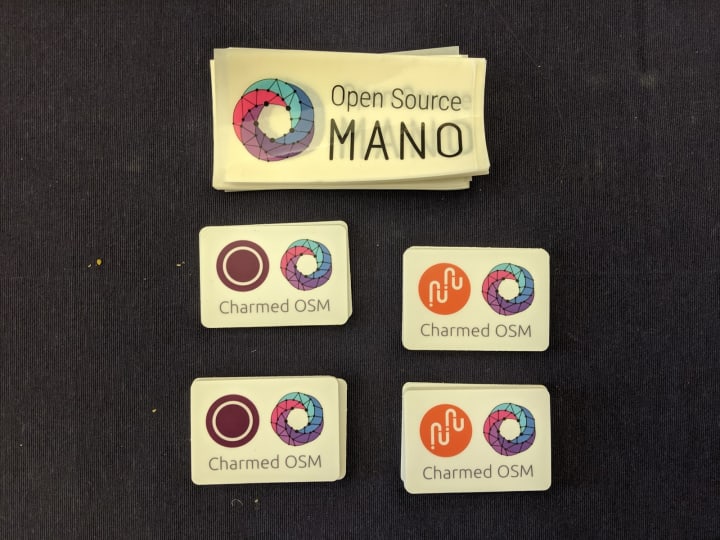8th OSM Hackfest: the highlights
Tytus Kurek
on 22 November 2019
The 8th OSM Hackfest is over, but the OSM (Open Source MANO) project continues to evolve and is now looking forward to landing release SEVEN. It was an exciting week in Lucca, Italy. We’ve seen a lot of interest from those who attended the event for the first time and a strong commitment from the community to drive the project towards new challenges.
This was also an important week for Canonical as we’ve officially launched our own distribution – Charmed OSM!
8th OSM Hackfest: the highlights
OSM remains the biggest open source project hosted by ETSI (European Telecommunications Standards Institute). With 14 global TSPs (Telecommunications Service Providers) involved and 137 members in total, it has now evolved and become a carrier-grade implementation of ETSI NFV MANO. The OSM release SEVEN is coming on Dec, 11th with a lot of exciting features. These include, for example, a possibility to deploy CNF (Container Network Functions) workloads with Juju K8s charms. The release SEVEN is coming on Dec, 11th.
During the Hackfest newcomers had an opportunity to try OSM in a real environment. They went through the installation process and learned how to create VNFDs (Virtual Network Function Descriptors). They also passed a charm school to be able to implement day-1/day-2 VNF primitives. Slides from all sessions will be available at the OSM wiki.
Canonical at the 8th OSM Hackfest
By delegating an experienced team of telco experts, Canonical delivered a plenary session about native charms and a presentation about CNF (container network function) workloads deployment with Juju K8s charms, a feature that is expected in OSM release SEVEN. The session about native charms followed with a brief update on a new charm tech framework. The charm tech framework is event-based which makes charming experience much more intuitive. An example of how to migrate from the reactive framework to the new framework was provided too. The charm tech framework is coming with Juju 2.7 release.

So what are charms? Charms are collections of scripts and metadata which contain the entire logic required to install, configure, connect and operate services. This includes network services. Telcos can use charms to onboard and orchestrate their VNFs and CNFs as charms provide a native way to implement day-1 and day-2 VNF primitives. OSM uses charms as the default mechanism to deploy and manage network function workloads.
Moreover, Canonical participated in all technical sessions, helping to drive release SEVEN towards its deliverance and providing guidance with regards to the scope of release EIGHT. As an established leader in open-source software, Canonical constantly brings the best practices of software development to the OSM project.
Charmed OSM officially launched
On Wednesday, Oct 20th, Canonical announced the availability of the Charmed OSM distribution. Charmed OSM is a pure upstream OSM designed for highly available, production-grade deployments. Canonical will support Charmed OSM under Ubuntu Advantage to provide critical security patches and bug fixes. In order to fully transfer the risk associated with OSM operations from the TSPs, Canonical also provides the managed services option. This means that telcos can focus on network functions themselves rather than struggling with OSM deployment and maintenance.

Charmed OSM comes with a development stack consisting of MicroK8s and MicroStack. VNF developers can use it to run a fully functional OSM stack on their workstation. While MicroK8s provides a minimal Kubernetes installation for OSM hosting purposes, MicroStack delivers VIM (Virtual Infrastructure Manager) functionality. Developers can deploy their VNF workloads on MicroStack.
5G Day
This time the Hackfest was hosted together with a 5GCity hackathon. During the 5G Day on Wednesday, Oct 20th, 5GCity representatives presented use cases for OSM in the implementation of 5G networks. They discussed problems that TSPs face when adopting 5G and how does OSM resolve them.
MANO stack is an essential component of the 5G architecture. Telcos can use it to orchestrate services in the cloud and at the edge. In order to provide MANO functionalities, the 5GCity project uses OSM as an NFVO/VNFM. OSM provides lifecycle management and service orchestration capabilities for network functions. It is also possible to integrate the whole stack with a CICD pipeline and monitoring platforms to ensure the healthiness of the workloads.
Canonical and OSM
Canonical has been involved in OSM development since the foundations of the project. As one of the key contributors to OSM and an owner of the N2VC (Network Service to VNF Communication) component, Canonical remains an important member of the OSM community.
To learn more about Charmed OSM, visit its official website.
For more information about Canonical’s solutions for telcos, refer to the following website.
Talk to us today
Interested in running Ubuntu in your organisation?
Newsletter signup
Related posts
The hitchhiker’s guide to infrastructure modernization
One of my favourite authors, Douglas Adams, once said that “we are stuck with technology when what we really want is just stuff that works.” Whilst Adams is...
Canonical and Ampere announce AmpereOne® SoC certification and other partnership milestones
Ampere and Canonical are pleased to celebrate new milestones in their ongoing partnership including the completion of Canonical’s System-on-Chip (SoC)...
Canonical Releases Ubuntu 25.04 Plucky Puffin
The latest interim release of Ubuntu introduces “devpacks” for popular frameworks like Spring, along with performance enhancements across a broad range of...
